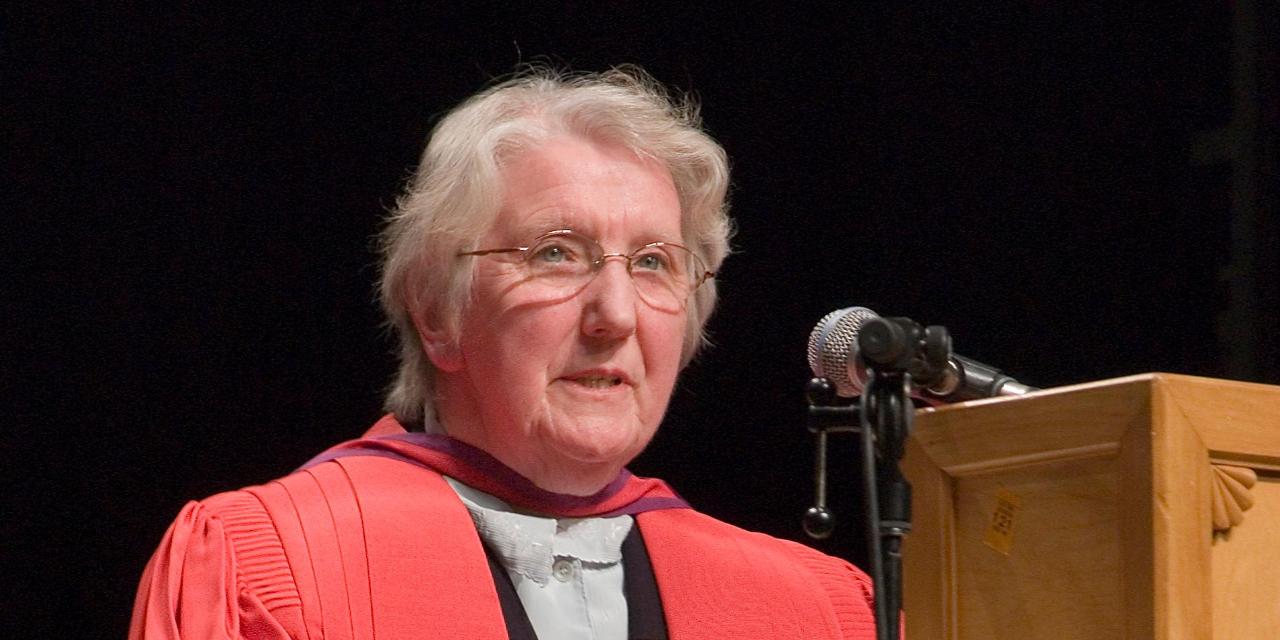Labour of love
During her long career as a nurse and midwife, Dr. Kay Matthews was often asked about her work delivering babies. But she was always certain to point out that mothers are the ones who deliver babies. She was simply there to “catch” them.
For Dr. Matthews, the distinction between delivering and catching is an important one because it signals the importance of mother-focused care.
Born in County Tyrone in Northern Ireland and raised in England, she graduated with her nursing diploma in 1960 from St. Anthony’s Hospital in North Cheam, Surrey, which is now in the London borough of Sutton.
After working at St. Anthony’s for two years, she decided to train as a midwife in London. She then worked as a community nurse and midwife in Oxfordshire.
When her husband was offered a position with Memorial University’s history department, they moved their family to Newfoundland. But there was one problem. While midwifery was an important part of the health-care system in England, midwives were not yet allowed to practice in Newfoundland.
For her first five years in the province, Dr. Matthews was out of the workforce. She concentrated on raising her family while offering Lamaze-based prenatal classes in her home to prospective parents.
When her students started to report that Lamaze, also known as the psychoprophylactic method, was not particularly well received or understood in the delivery rooms of St. John’s, she decided to act.
In 1973, she took a refresher course at the Grace Hospital and began working in the delivery unit. When she started, husbands weren’t allowed to attend the birth, and babies were kept in nurseries. She worked to get fathers more involved and began to encourage breastfeeding.
She then became the hospital’s maternal and child health co-ordinator. She ran the parent education program, with Lamaze-based classes in the maternity units at both the Grace and St. Clare’s, and started a community breastfeeding clinic.

Kay Matthews (B.N.’83, M.N.’87) recieved an honorary degree from Memorial University in 2006. Photo from Memorial University Archives.
Through all of this, Dr. Matthews worked on earning her bachelor of nursing degree at Memorial. She graduated in 1983 and accepted a position as a clinical instructor with the university that year.
In 1984, she began work on her master’s degree. As a part of her research, she developed the Infant Breastfeeding Assessment Tool, which continues to be used internationally to measure the success of breastfeeding for new moms.
When she was close to finishing her master’s degree, she was hired as a nursing professor at Memorial and finished her graduate work a few months later in 1987.
She had already begun to revolutionize maternal and prenatal care in Newfoundland, and now she offered her knowledge and expertise to a new generation of nurses, and many former students credit Dr. Matthews for making them the nurses they are today.
With Memorial, she developed motherhood programs in Africa, training birth assistants and upgrading the skills of practicing midwives. She also travelled to the University of Indonesia to help develop their graduate program in community health nursing.
She retired from Memorial in 2002 and was appointed as an honorary research professor the following year. But she came out of retirement in 2006, travelling to Nunavut as part of a project to train Inuit women as maternity care workers and midwives.
That same year, Memorial awarded her an honorary degree for her provincial, national and international service to maternal and child health.
It’s impossible to know how many mothers Dr. Matthews may have helped prepare for labour or how many babies she may have caught in homes and delivery rooms around the world. What we do know is that through her aspirations as a nurse she promised to make our health-care system better for all our moms. And when it comes to that promise, she delivered.
